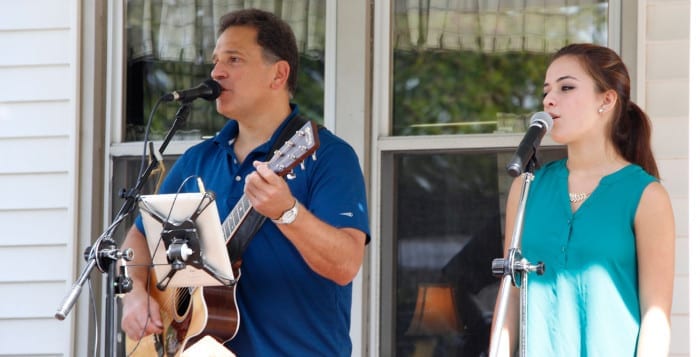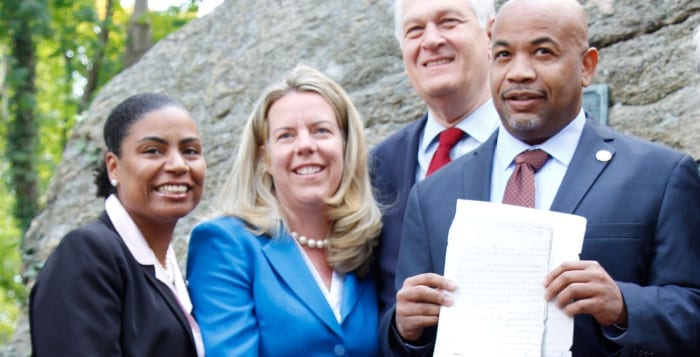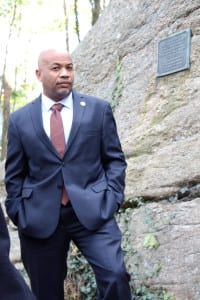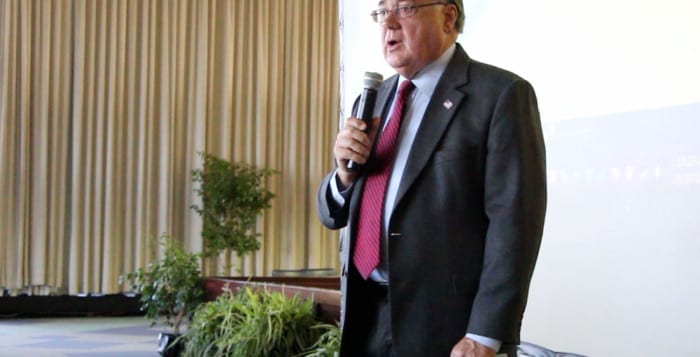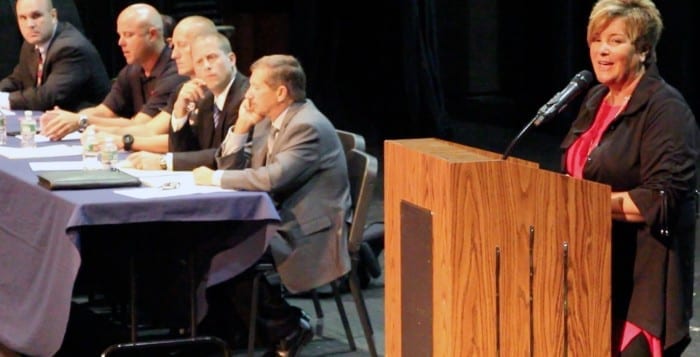Sal Mingoia grew up in a musical family, and now, so does his 17-year-old daughter and performer in crime, Gina.
The daddy-daughter duo began performing together five years ago after Sal Mingoia invited his daughter to one of his gigs. Gina Mingoia showed an interest in music at a very young age, according to her father, and her interest sparked his idea to invite his then 12-year-old daughter to the bar where he was scheduled to perform.
“I’m nobody’s warm-up act,” Sal Mingoia said.
Since then, the Shoreham pair took the stage together — Sal Mingoia on the guitar and vocals and Gina Mingoia as the lead singer — performing country and original songs the daughter writes. While Sal Mingoia is no stranger to the music scene, as he started performing in bands at 14 years old, he and his wife Denise never thought their daughter would perform.
“She was the shyest kid,” her mother said. “She would be hiding here behind me.”
The first time their daughter sang for an audience was during a family event. Her mother remembered her sitting on a chair in front of the refrigerator looking at a sheet of music as she played the guitar and sang for her family. This was before a teacher made her a lead character in a school play, which helped Gina Mingoia combat her shy demeanor.
Last year, her voice and determination took her as far as “The Voice.” After auditioning for the show last July, the judges told her to come back and they would automatically put her through to the second round. She has yet to go back and try out.
For Sal Mingoia, entering the music scene was not as nerve-wracking. His father was a jazz guitar player before he passed away, and although Sal Mingoia never received formal lessons, his father tapped into his musical abilities when he was a child. The father’s three brothers and sisters are also musically inclined. Family functions like birthdays and holidays such as Christmas are never a dull moment for the Mingoia family as each event allows the family to perform together.
While singing is fun for the family and the daddy-daughter duo alike, practicing and performing is a balancing act for Sal Mingoia and his daughter. The summer months are busier for the pair as they regularly perform at the Baiting Hollow Golf Club. However, during the academic year Gina Mingoia, a Shoreham-Wading River student, balances school and other activities while her father’s availability is more limited, as he also serves as a Suffolk County policeman and a performer for a folk rock band.
“It’s not easy — I have to schedule myself a few days in advance,” Mingoia said regarding scheduling practice with his daughter.
The two admitted that practices can be stressful.
“Singing is easy, you just have to hear the song once and then you can sing,” Gina Mingoia said. “But to learn the guitar part, you have to play around with [the song] and find the notes you’re looking for. It stresses me out when he doesn’t know what he’s going to do ahead of time.”
Finding appropriate songs to perform is another issue. When it comes to performing cover songs, the pair needs to find a song that works for them, both musically and lyrically. The song must be appropriate for the two to sing, but they also need to transform the piece. On the radio, the music incorporates several instruments, background singers and other levels, but for the daughter and her father, it’s just them and a guitar.
Performing at sensitive events like fundraisers for Gina Mingoia’s former friend, Tom Cutinella, a Shoreham-Wading River High School football player who died last year after suffering a fatal injury from a collision during a game, are also difficult. The two usually “feel out the crowd” to see what songs might work best.
While the duo figures out their plan as they practice for gigs, Sal Mingoia said he doesn’t mind if his daughter goes solo.
“For me, I’m just kind of her back-up band,” he said. “I think it’s a unique thing that it’s a father-daughter thing. Not too much of that is happening, but if someone wanted to sign her and throw me aside, that’s perfectly fine.”

